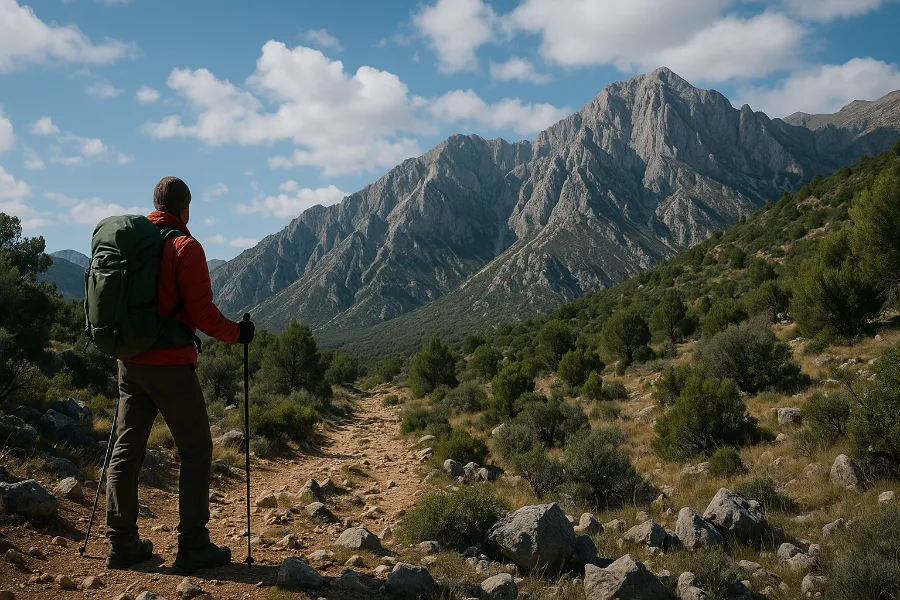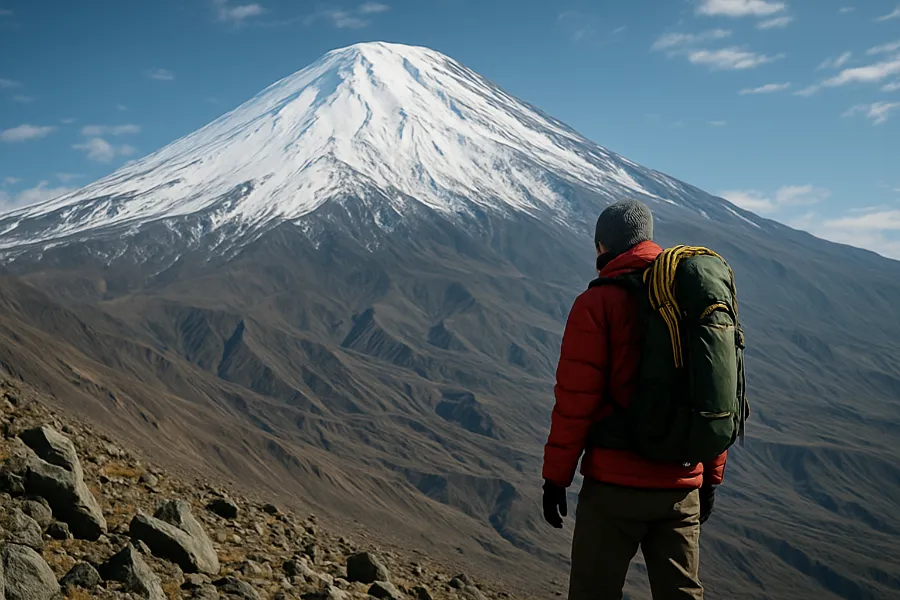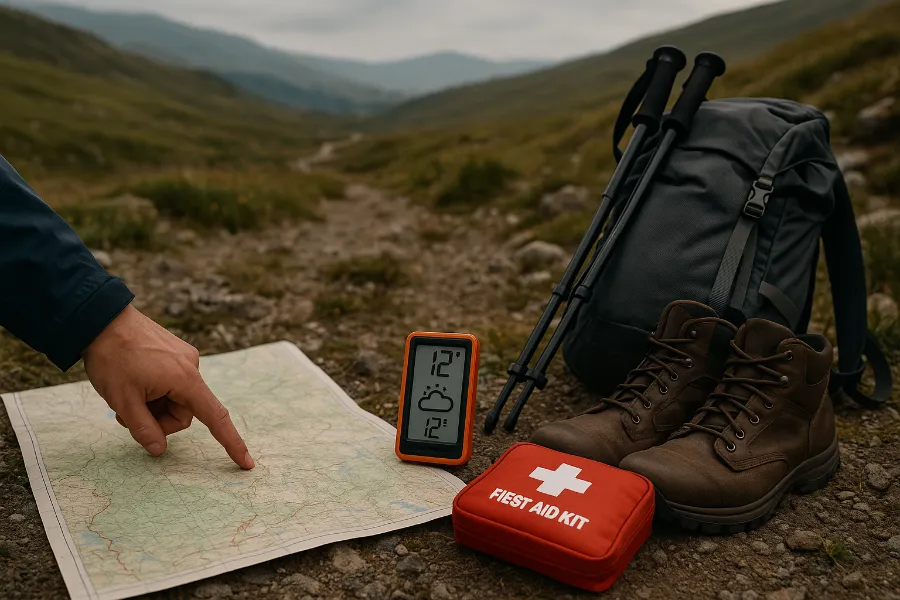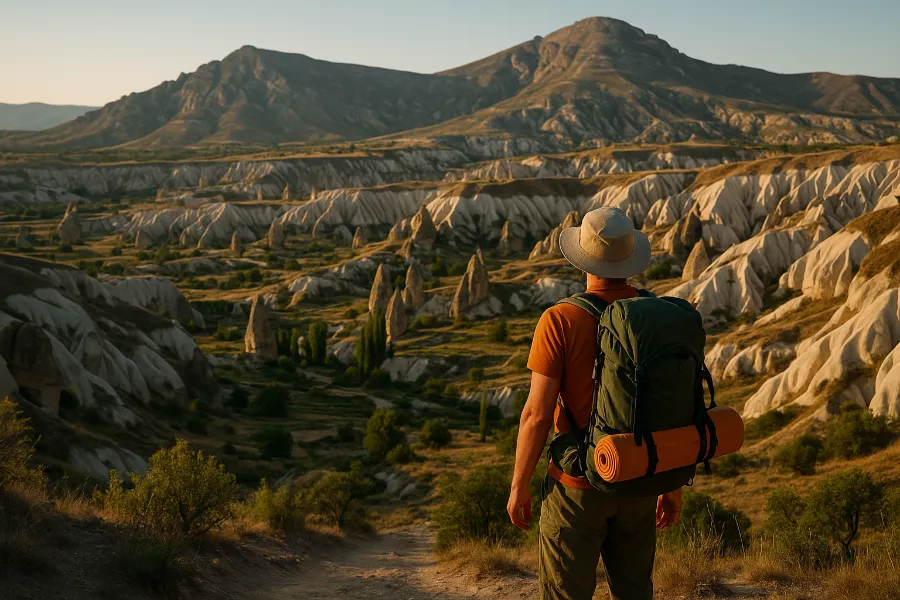
Turkey is a dream destination for outdoor enthusiasts, and if there’s one activity that brings together the country’s nature, history, and culture, it’s hiking in Turkey. With landscapes that range from sun-soaked Mediterranean coasts to towering snow-capped peaks, and trails that weave through ancient ruins and timeless villages, hiking in Turkey is more than just a physical adventure—it’s a journey through time. Whether you’re a casual walker or a seasoned trekker, this country offers some of the most rewarding trails in the world.
The Top Hiking Trails in Turkey
The Lycian Way
The Lycian Way is perhaps the most famous hiking route in Turkey, stretching over 500 km along the southern coast from Fethiye to Antalya. Created by British expat Kate Clow, this trail traces ancient paths of the Lycian civilization. Expect turquoise waters, rugged cliffs, pine forests, and ruins of forgotten cities like Olympos and Patara. Completing the full route takes about a month, but many hikers choose shorter sections—like Fethiye to Kabak or Olympos to Cirali—for a weeklong trek.
St. Paul Trail
Another long-distance trail designed by Kate Clow, the St. Paul Trail follows the footsteps of the Apostle Paul through the Taurus Mountains. Covering nearly 500 km from Perge to Yalvaç, this trail combines biblical history with jaw-dropping mountain scenery. It’s more rugged than the Lycian Way, making it perfect for hikers who want a challenge.
Cappadocia
Cappadocia is world-renowned for its fairy chimneys, cave dwellings, and surreal landscapes. The region offers shorter day hikes through valleys such as Rose Valley, Red Valley, and Ihlara Valley. Trails here are easy to moderate, making them ideal for hikers of all levels. Don’t miss sunrise hikes where hot air balloons rise over the landscape, adding to the magic.
Kaçkar Mountains
Located in northeastern Turkey near the Black Sea, the Kaçkar Mountains are a paradise for serious trekkers. Alpine meadows, glacial lakes, and rugged peaks make this one of the best places for multi-day treks. Routes usually start from villages like Ayder or Yusufeli. Mount Kaçkar, at 3,937 meters, is the crown jewel for climbers who want a challenging summit.
Carian Trail
At 850 km, the Carian Trail is one of Turkey’s longest waymarked routes. Winding through the Aegean and Mediterranean coasts, it links ancient Carian cities with picturesque fishing villages and wild forests. Highlights include the Bozburun Peninsula and the Gulf of Gökova, where dramatic sea views reward every climb.
Balçova Terapi Ormanları
For those who want an accessible hike near Izmir, Balçova Terapi Ormanları is a peaceful option. Known for its therapeutic forests, ponds, and mountain views, it’s a perfect day trip for families, photographers, and anyone seeking fresh air.
Mount Ararat
For experienced mountaineers, Mount Ararat (Ağrı Dağı) in eastern Turkey is the ultimate challenge. At 5,137 meters, this dormant volcano is the country’s highest peak. According to legend, it’s also the resting place of Noah’s Ark. Climbing requires a permit and usually takes 4–6 days, with professional guidance recommended.

Other Notable Routes
- Abraham’s Path (Şanlıurfa): A trail rich in religious history.
- Independence Trail (İnebolu to Kastamonu): A route tied to Turkey’s War of Independence.
- Sultan’s Trail (Edirne to Istanbul): Following Ottoman-era paths.
- Küre Mountains: Home to deep valleys, waterfalls, and diverse wildlife.
- Phrygian Way & Hittite Trail: Ideal for history buffs who want to explore ancient civilizations.
What to Expect on the Trails
Hiking in Turkey is as diverse as the landscapes themselves. On coastal trails, you’ll walk past olive groves, hidden beaches, and fishing villages. In the mountains, expect alpine lakes, wildflowers, and traditional highland settlements. Many trails also pass through ancient ruins, adding a cultural layer to your adventure. Difficulty levels range from short, easy valley hikes in Cappadocia to demanding long-distance treks like the St. Paul Trail.
Practical Tips for Hiking in Turkey
Best Seasons to Go
- Spring (April–June): Lush greenery, mild temperatures, and blooming wildflowers.
- Autumn (September–November): Crisp air, colorful landscapes, and fewer crowds.
- Summer: Can be very hot along the coast, though mountain trails are cooler.
- Winter: Best avoided for high trails, though Cappadocia offers unique snowy hikes.

What to Pack
- Sturdy hiking or trekking shoes.
- Plenty of water and purification tablets.
- Lightweight raincoat (weather can change quickly).
- Snacks and emergency supplies.
- Sun protection (hat, sunglasses, sunscreen).
Accommodation
Options vary from wild camping along long-distance routes to family-run pensions, boutique hotels, or guided tour lodges. On trails like the Lycian Way, small homestays and campsites are common.
Costs & Budgeting
Turkey remains a relatively affordable hiking destination. Camping reduces costs significantly, while pensions or guided tours range from $20–$80 per day depending on comfort.
Safety and Preparation
- Guides vs. Solo Hiking: Beginners are encouraged to join guided tours, especially on challenging trails like Mount Ararat or Kaçkar Mountains.
- Weather: Always check conditions before heading out, especially in the mountains.
- Health: Carry a basic first aid kit, and let someone know your itinerary.

Why Hiking in Turkey Should Be on Your List
Few places combine nature, history, and culture as seamlessly as Turkey. Hiking in Turkey is more than just exercise—it’s stepping into a living museum, where every path tells a story. Whether you’re wandering through Cappadocia’s valleys, pushing your limits in the Kaçkar Mountains, or soaking in coastal views along the Lycian Way, the experience will stay with you long after you return home.
If you’re craving adventure, inspiration, and the chance to connect with landscapes that have shaped civilizations, Turkey’s trails are calling. Lace up your boots—your unforgettable hiking journey awaits.










